Do you wonder how diamonds can be cut into two pieces if they are one of the hardest materials? Do you often get confused with the different properties of materials governing different functions? Can you list any five important properties of materials? Well, you can get answers to all these questions just after reading this small post.
In all engineering fields, the component parts of a structure or any machine are made of some kind of material. This material must be properly selected or proportioned to resist upcoming forces or to deliver the desired result. Such requirements must be met with the minimum expenditure. So selection of material is vital. The behavior of a member subjected to forces not only depends on the fundamental laws of Newtonian mechanics that govern the equilibrium of the forces but also on the mechanical properties of the materials of which the member is fabricated. So let’s read about some important properties of the material that affect our choice of selection.
Mechanical Properties of Materials:
Important properties of materials used in the engineering field are as follows:
- Elasticity:
- Plasticity
- Ductility
- Malleability
- Creep
- Relaxation
- Fatigue
- Resilience
- Toughness
- Hardness
Elasticity
The property by virtue of which a material regains its original shape and dimension instantaneously on unloading before the elastic limit is called elasticity. If the material is loaded beyond the point of elasticity and then unloaded, It will not regain its shape and will have a residual strain. The unloading curve will be different however it will be parallel to the initial portion of the loading curve. Here proportional limit gets enhanced but ductility decreases. Residual elongation is called permanent set.
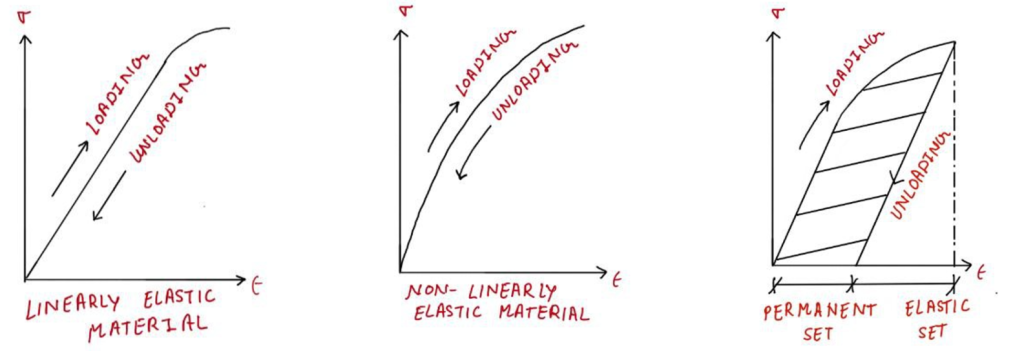
Plasticity
The property by virtue of which a material undergoes inelastic strain before fracture is known as plasticity.
Ductility
Ductility represents the amount by which a material can be drawn in tension.
Malleability
It is the property by virtue of which material can be deformed or spread in a different direction under compression. Note: It is not necessary that ductile materials are also malleable. For example, Lead is not ductile, but malleable. Copper is both malleable and ductile.
Creep
It is the property by virtue of which the material undergoes time-dependent strain increases under sustained loading. Creep occurs due to permanent loading like a dead load. It depends on the temperature level, stress level, time, and type of loading( Static or dynamic). The rate of creep decreases with time as strain hardening takes place when stress increases. Creep is significant in the case of metals particularly at higher temperatures and at higher stress levels. Creep strains are not 100% recoverable.
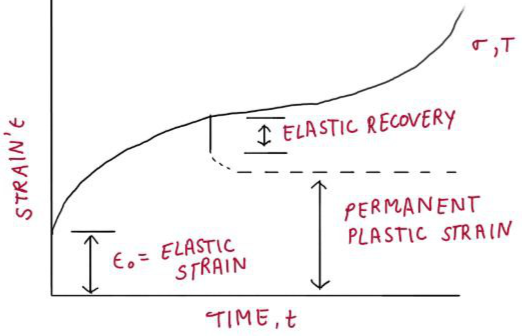
Relaxation
A decrease in stress with the passage of time is called relaxation. creeping is responsible for it. If the bar is stretched to $$\sigma_o$$ stress in time $$t_o$$ and thereafter left to bear that stress, then the stress will go on reducing and ultimately becomes constant.
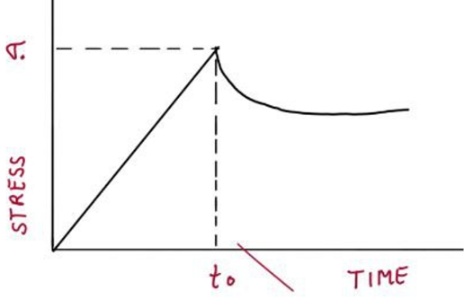
Fatigue
Deterioration of material under the repeated cycle of stress resulting in progressive cracking which ultimately causes fracture is called fatigue. Fatigue strength is always less than the load that can be sustained statically. Fatigue failure depends upon:
- Magnitude of loading
- Loading cycle
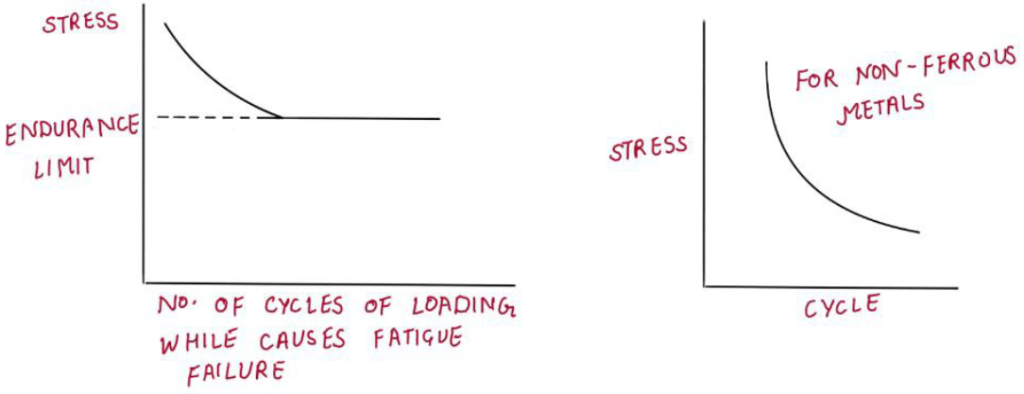
Endurance limit: It is a stress level below which even an infinite number of cycles can not cause fatigue failure. Non-ferrus materials generally do not have an endurance limit. Corrosion will lead to a decrease in the endurance limit.
Resilience
It is the property of a material by virtue of which it can absorb energy without getting permanently deformed. The area under the stress-strain curve up to the elastic limit is called the modulus of resilience. For linearly elastic material,
$$
\frac{\sigma_{\mathrm{y}}^2}{2 \mathrm{E}}
$$
is the modulus of resilience. The better the modulus of resilience, the better the material for making springs. The area under the stress-strain curve is called strain energy per unit volume.
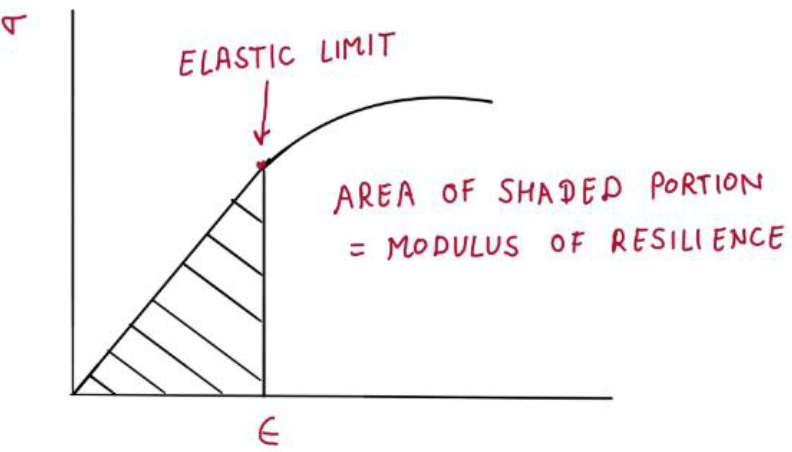
Toughness
It is the ability to absorb mechanical energy up to fracture. Toughness is a measure of resistance against fracture. The area under the stress-strain curve up to fracture is called the modulus of toughness. It is desirable property against impact action. Mild steel is tougher as compared to cast iron.
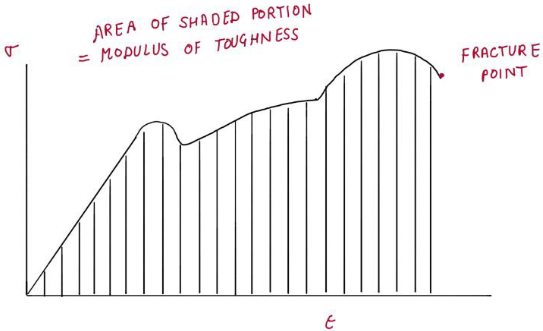
Hardness
Hardness: It is the ability to resist scratch or abrasion. Higher the yield stress, the greater the hardness.
Conclusion
The subject of solid mechanics is very important to all branches of the engineering profession. Designers of all the fiels uses the understanding and basic properties of materials. After knowing the basic properties of materials, we can easily decide what kind of material will be suitable for the required work and it will save a lot of money and will be more functional.
Some key learning from the post
- Properties of materials: we learned about many properties of materials like elasticity, plasticity, Ductility, Malleability, Creep, Relaxation, Fatigue, Resilience, Toughness, and Hardness.
- Graphical inference: We got the idea of how these properties are derived from graphs